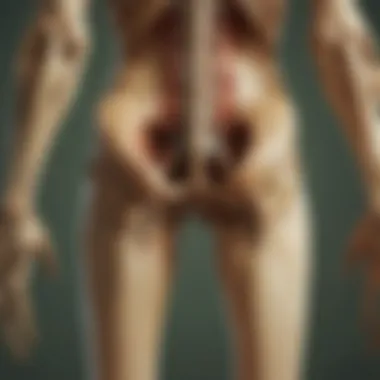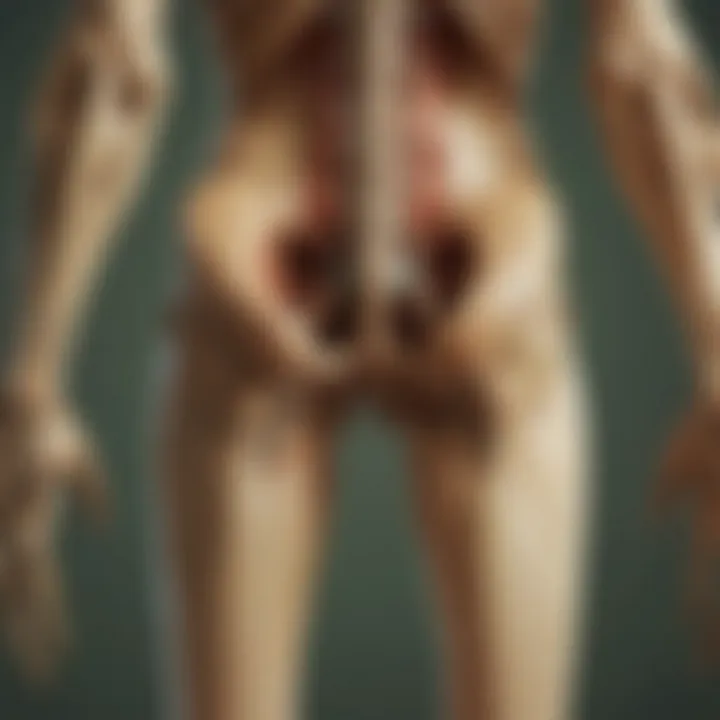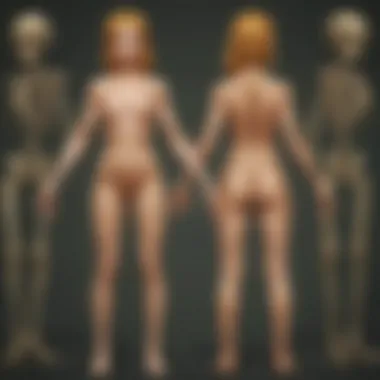Comprehensive Guide to Understanding Sciatica: Symptoms, Causes, and Treatments


Sciatica is a prevalent condition characterized by radiating pain along the sciatic nerve, impacting numerous individuals worldwide. It significantly affects one's quality of life, necessitating a comprehensive understanding of its symptoms, causes, and treatment methods.
Symptoms of Sciatica
Symptoms of sciatica manifest uniquely in individuals, typically including sharp, shooting pain that radiates from the lower back through the buttock and down one leg. This discomfort may intensify when sitting or standing for prolonged periods, leading to numbness, muscle weakness, and tingling sensations in the affected leg. Understanding these distinct symptoms is crucial in identifying and addressing sciatica effectively.
Causes of Sciatica
Sciatica often stems from various underlying conditions such as herniated discs, bone spurs, or spinal stenosis, exerting pressure on the sciatic nerve. Additionally, muscle strain or injury may also contribute to the development of this condition. Recognizing the specific cause of sciatica is pivotal in devising targeted treatment strategies to alleviate pain and restore mobility.
Treatment Options for Sciatica
Effective management of sciatica involves a multidisciplinary approach encompassing medication, physical therapy, and lifestyle modifications. Anti-inflammatory drugs, muscle relaxants, and corticosteroid injections are commonly prescribed to alleviate pain and inflammation. Physical therapy aims to strengthen muscles supporting the spine, while lifestyle adjustments emphasize proper posture and ergonomics to mitigate strain on the affected nerve. In severe cases, surgical intervention may be necessary to address the root cause of sciatica and provide lasting relief.
Delving into the intricacies of sciatica equips individuals with the knowledge to navigate this challenging condition and pursue optimized treatment pathways tailored to their unique needs.
Introduction
In embarking on our exploration of sciatica, we are delving into a prevalent condition characterized by the radiating pain along the sciatic nerve. This article aims to shed light on the symptoms, causes, and treatment options available for individuals grappling with this incapacitating issue. By comprehensively examining sciatica, we hope to offer readers valuable insights into a condition that can significantly impact one's quality of life.
What is Sciatica?
A pressing query that emerges when discussing sciatica is understanding the essence of this condition. Sciatica, at its core, refers to the discomfort and pain that ripple along the path of the sciatic nerve. This nerve, which extends from the lower back through the hips and buttocks down to each leg, plays a pivotal role in mobility and sensation of the lower body. By unraveling the intricacies of sciatica, we equip ourselves with the knowledge needed to address its symptoms and manage its repercussions effectively.
Significance of Sciatica
The gravity of sciatica cannot be overstated, given its profound impact on daily life. Those afflicted by sciatica often endure excruciating pain, numbness, and tingling that impede their routine activities. Recognizing the significance of sciatica prompts us to delve deeper into its origins, symptoms, and management strategies. By grasping the weight of this condition, we heighten our awareness of its complexities and the urgency for appropriate care and intervention.
Overview of the Sciatic Nerve


Central to our exploration of sciatica is comprehending the sciatic nerve itself. This nerve, known as the longest and thickest in the human body, serves a critical role in connecting the spinal cord with the legs and feet. Understanding the trajectory and functions of the sciatic nerve elucidates why issues with this nerve, such as compression or inflammation, can give rise to the distressing symptoms associated with sciatica. By delving into the anatomy and functions of the sciatic nerve, we gain a deeper appreciation for its role in our overall well-being.
Symptoms of Sciatica
In this article on Understanding Sciatica, a keen exploration of the diverse Symptoms of Sciatica is paramount. Symptomatic revelation holds the key to unraveling the enigma of this condition. The central focus remains on deciphering the pain, numbness, and weakness that individuals battling with sciatica encounter, portraying a holistic picture of the challenges they face daily.
Pain Patterns
Delving into the intriguing realm of Pain Patterns associated with sciatica sheds light on the varying nature and intensity of discomfort individuals endure. The journey to understand this intricate interplay involves dissecting the sharp, shooting pain that courses through the lower back, buttock, and down the leg. Examining how these patterns evolve and manifest helps demystify the complexity of sciatica's symptomatic manifestation.
Numbness and Tingling
A critical juncture in discussing sciatica's Symptoms is the occurrence of Numbness and Tingling sensations that disrupt normal nerve function. Exploring the tingling akin to pins and needles and the numbness that dampens sensation offers a glimpse into how nerve compression impacts daily functionality. Understanding these sensations provides a deeper appreciation of the challenges individuals face with each passing day.
Muscle Weakness
The aspect of Muscle Weakness within the arena of sciatica unveils a narrative of physical limitations and compromised mobility. Unraveling the connection between nerve impingement and muscular atrophy highlights the profound impact sciatica exerts on one's strength and motor abilities. Delving into the intricacies of muscle weakness amplifies awareness regarding the debilitating nature of this condition.
Causes of Sciatica
Herniated Disc
Disc herniation, a prevalent cause of sciatica, occurs when the soft inner core of a spinal disc protrudes through the tougher outer layer. This protrusion can exert pressure on the adjacent nerve roots, including those composing the sciatic nerve, leading to pain, tingling, and numbness in the lower back, buttocks, and legs. Herniated discs, often triggered by age-related degeneration or sudden injuries, underline the significance of understanding how anatomical changes can instigate sciatica symptoms. Exploring the interplay between disc herniation and sciatica provides a nuanced perspective on the multifaceted nature of this debilitating condition.
Spinal Stenosis
Spinal stenosis, a condition characterized by the narrowing of the spinal canal, emerges as another notable contributor to sciatica. The constriction of the spinal canal can compress the spinal cord and nerve roots, including those enveloped by the sciatic nerve, culminating in radiating pain and neurological deficits. Addressing spinal stenosis in the context of sciatica elucidates how structural abnormalities within the spine can instigate symptoms that reverberate along the length of the sciatic nerve. Unveiling the intricate relationship between spinal stenosis and sciatica serves to underscore the importance of comprehensive diagnostic evaluations in identifying the root cause of debilitating lower back pain.
Degenerative Disc Disease


Degenerative disc disease, marked by the gradual degradation of spinal discs over time, emerges as a factor predisposing individuals to sciatica. As intervertebral discs lose their hydration and elasticity, they become more susceptible to wear and tear, leading to disc herniation, nerve compression, and subsequent sciatic nerve irritation. Delving into degenerative disc disease within the spectrum of sciatica illuminates how age-related changes in spinal structures can set the stage for recurrent episodes of radiating leg pain. Analyzing the intricate interplay between disc degeneration and sciatica underscores the necessity of proactive measures to mitigate the impact of aging on spinal health, thereby promoting long-term well-being.
Diagnosis of Sciatica
In this comprehensive guide on sciatica, understanding the diagnosis process holds immense significance. Diagnosis of sciatica is crucial for accurately identifying the root cause of the condition and devising an effective treatment plan. By focusing on specific elements such as medical history, physical examinations, and imaging tests, healthcare providers can pinpoint the exact source of the patient's symptoms. The benefits of a thorough diagnosis include tailoring treatment approaches to individual needs, minimizing the risk of misdiagnosis, and promoting faster recovery.
Physical Examination
A critical aspect of diagnosing sciatica is the physical examination. During this process, healthcare professionals assess the patient's range of motion, reflexes, muscle strength, and neurological functions. By carefully examining these physical aspects, practitioners can gather valuable insights into the nature and severity of the condition. Physical examinations also help in differentiating sciatica from other potential causes of similar symptoms, guiding healthcare providers towards appropriate treatment strategies.
Imaging Tests
In addition to physical examinations, imaging tests play a vital role in diagnosing sciatica. Techniques such as X-rays, MRIs, and CT scans allow medical professionals to visualize the spine, nerves, and surrounding structures with precision. These tests help identify underlying issues such as herniated discs, spinal stenosis, or nerve compression, providing essential information for treatment planning. Imaging tests complement physical examinations by offering detailed structural insights, enhancing diagnostic accuracy and guiding healthcare providers towards optimal management strategies.
Electromyography (EMG)
Electromyography (EMG) represents a specialized diagnostic tool used in evaluating nerve and muscle function in patients with sciatica. By measuring the electrical activity generated by muscles, EMG aids in pinpointing nerve damage and assessing the severity of nerve compression. This test can help determine the extent of nerve dysfunction, guiding treatment decisions and prognosis evaluation. EMG complements physical examinations and imaging studies, offering a comprehensive assessment of nerve health and functionality in individuals with sciatica.
Treatment Options
When it comes to Treatment Options for sciatica, various modalities exist, each offering specific benefits and considerations. Medications, physical therapy, and surgical interventions are three primary categories that healthcare providers may recommend based on the severity and underlying cause of the sciatic nerve pain. It is imperative to assess the individual's overall health status, pain tolerance, and treatment goals to determine the most suitable course of action.
Medications
The use of medications is a common strategy in managing sciatica symptoms, aimed at reducing pain and inflammation. Nonsteroidal anti-inflammatory drugs (NSAIDs), muscle relaxants, and analgesics are often prescribed to alleviate discomfort and improve mobility. While medications provide short-term relief, it is vital to consider potential side effects and dependencies that may arise with prolonged use. Healthcare providers carefully monitor medication regimens to optimize pain management while minimizing risks.
Physical Therapy
Physical therapy plays a pivotal role in the comprehensive treatment of sciatica, focusing on strengthening the supporting muscles, improving flexibility, and enhancing overall mobility. Through targeted exercises, manual therapies, and posture correction techniques, physical therapists strive to address the root cause of sciatic nerve pain and prevent recurrent episodes. Patient compliance and active participation in physical therapy programs are crucial for achieving long-term benefits and sustaining functional improvements.


Surgical Intervention
In severe cases where conservative treatments fail to provide sufficient relief, surgical intervention may be recommended as a last resort. Surgical procedures for sciatica often target the underlying structural issues contributing to nerve compression, such as herniated discs or spinal stenosis. While surgery offers the potential for significant pain reduction and functional restoration, it entails inherent risks and recovery periods that necessitate thorough discussion and consideration between patients and healthcare providers. The decision to undergo surgical intervention should be based on a thorough evaluation of the risks, benefits, and anticipated outcomes.
Preventive Measures
In this segment of our expansive discourse on sciatica, delving into preventive measures assumes pivotal importance. Addressing how to prevent sciatica provides a proactive approach towards mitigating potential suffering. By focusing on preventive measures, individuals can potentially avert the onset or recurrence of this debilitating condition. Emphasizing exercises and stretches, maintaining proper posture, and adopting lifestyle adjustments can significantly contribute to reducing the risk or severity of sciatica. Through these preventive steps, individuals can cultivate habits that promote spinal health and nerve well-being.
Exercise and Stretching
Engaging in regular exercise and incorporating specific stretches tailored to alleviate sciatic nerve pressure can be instrumental in managing and preventing sciatica. These targeted movements aim to strengthen muscles, enhance flexibility, and alleviate tension in the lower back and legs. By adhering to a well-rounded exercise routine that encompasses both cardiovascular workouts and strength training exercises, individuals can bolster their musculoskeletal health. Stretching routines, particularly focusing on the hamstrings, piriformis, and lower back, can help alleviate pressure on the sciatic nerve, fostering improved mobility and reducing pain.
Maintaining Proper Posture
The significance of maintaining proper posture cannot be overstated in the realm of sciatica prevention. Correct posture plays a vital role in spine alignment, reducing excess strain on the lower back and supporting optimal nerve function. By sitting and standing with proper posture, individuals can prevent undue pressure on the spine and nerve roots, consequently lowering the risk of developing or exacerbating sciatica. Incorporating ergonomic furniture and workspace setups, practicing mindfulness of body alignment, and taking periodic breaks to stretch and realign can aid in maintaining healthy spinal positioning and minimizing discomfort.
Lifestyle Adjustments
Integrating lifestyle adjustments encompassing dietary modifications, stress management techniques, and behavioral changes form another crucial aspect of sciatica prevention. Adopting a nutritious diet rich in anti-inflammatory foods can combat inflammation in the body, potentially reducing nerve irritation. Managing stress through relaxation practices like yoga, meditation, or mindfulness can alleviate tension in muscles and prevent exacerbation of sciatic pain. Implementing behavioral changes such as proper lifting techniques, avoiding prolonged sitting, and prioritizing restorative sleep can further contribute to maintaining spinal health and overall well-being.
Conclusion
In this comprehensive exploration of sciatica, spanning various aspects of symptoms, causes, and treatment, the conclusion plays a crucial role in tying together the key insights provided throughout the article. By dissecting the intricacies of this debilitating condition, we unveil the significance of early intervention and effective management strategies. The Conclusion section serves as a vital summary encapsulating the essence of sciatica, emphasizing the importance of proactive measures in mitigating its impact on individuals' daily lives. It highlights the necessity of understanding the underlying causes and symptoms to facilitate optimal treatment protocols, ultimately enhancing the quality of life for those grappling with sciatic nerve pain.
Key Takeaways
Unveiling the complexities surrounding sciatica, the key takeaways encapsulate fundamental learnings essential for comprehending this condition. From recognizing the diverse pain patterns to understanding the role of muscle weakness and numbness, individuals gain valuable insights into identifying and addressing sciatic nerve-related issues. Delving into the causes such as herniated discs, spinal stenosis, and degenerative disc disease, the key takeaways shed light on the underlying factors contributing to sciatica's onset. Furthermore, exploring treatment options like medications, physical therapy, and surgical interventions offers a holistic view of managing sciatic nerve pain effectively, empowering individuals to make informed decisions regarding their health.
Future Research Directions
Looking ahead, future research directions in sciatica present a compelling avenue for enhancing diagnosis and treatment methodologies. By delving deeper into the molecular mechanisms underlying sciatic nerve pain, researchers can unravel novel therapeutic targets and advanced diagnostic tools. Investigating alternative treatment modalities and incorporating technological advancements may revolutionize the landscape of sciatica management, providing more personalized and efficient care for patients. Embracing interdisciplinary collaborations and harnessing cutting-edge research methodologies can pave the way for innovative interventions, shaping the future of sciatica treatment practices.
Importance of Early Intervention
The importance of early intervention in sciatica cannot be understated, as timely recognition and management are pivotal in alleviating suffering and preventing chronic disability. Addressing symptoms promptly through tailored interventions decreases the risk of progression and enhances treatment outcomes significantly. Early identification of sciatic nerve-related issues enables healthcare providers to implement targeted strategies, effectively mitigating pain and restoring function. By emphasizing the significance of prompt diagnosis and intervention, individuals can proactively address sciatica, improving their prognosis and overall well-being.







